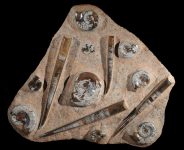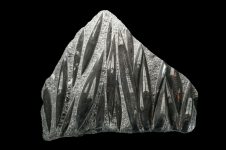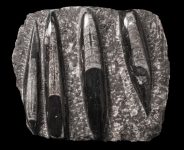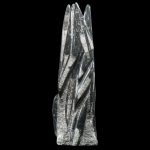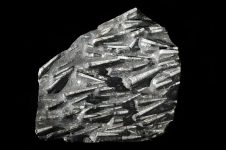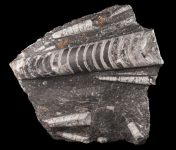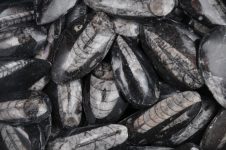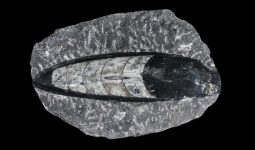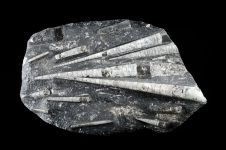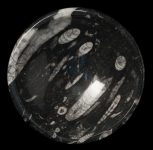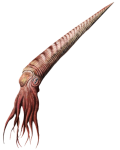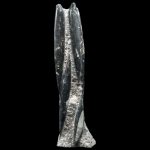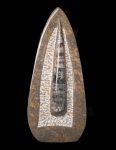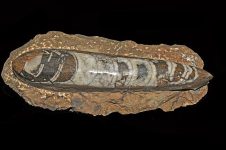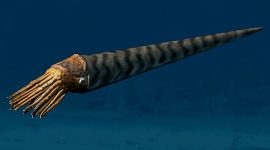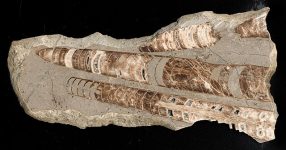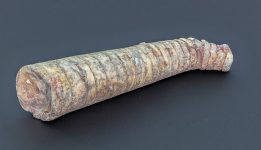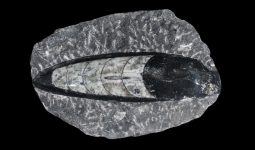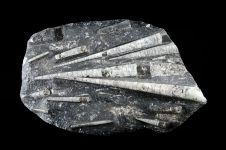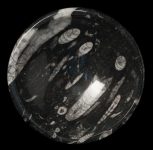ORTHOCERAS
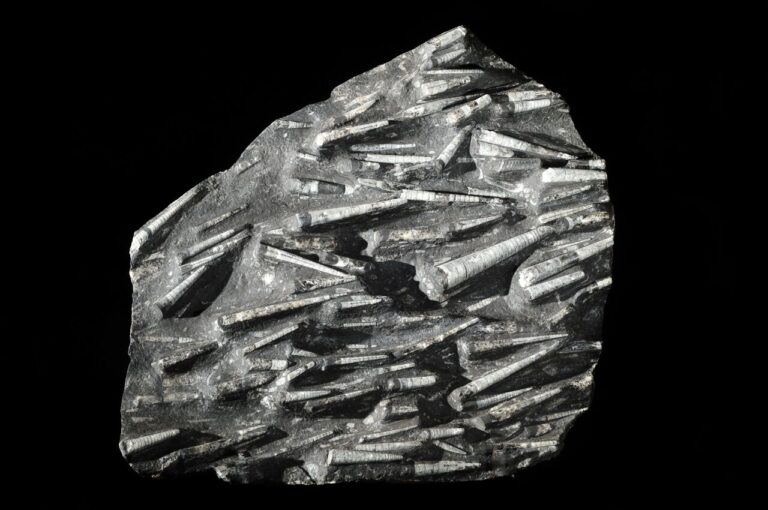
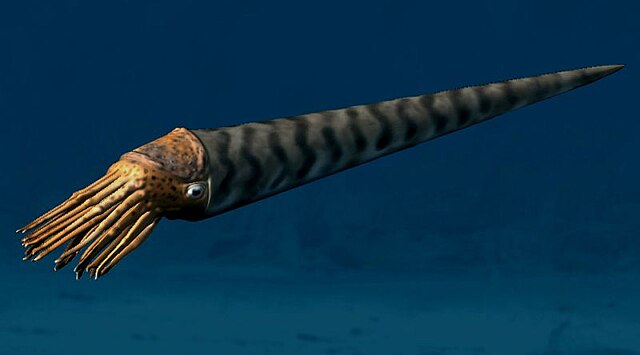
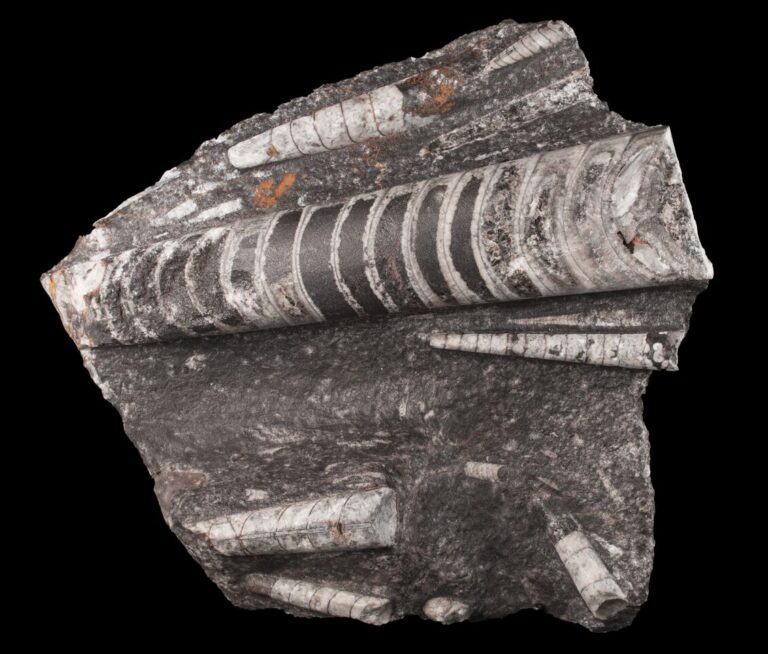
ORTHOCERAS
Orthoceras is a genus of extinct marine cephalopods that lived during the Ordovician period, approximately 485 to 443 million years ago. Belonging to the class Cephalopoda and the subclass Orthoceratoidea, these creatures are renowned for their elongated, cone-shaped shells and their importance in the study of ancient marine ecosystems and evolutionary biology. In this exploration, we delve into the anatomy, evolution, habitat, diversity, extinction, and scientific significance of Orthoceras.
Anatomy and Shell Structure
Orthoceras possessed long, straight to slightly curved shells composed primarily of aragonite, a form of calcium carbonate. Unlike the coiled shells of ammonites and some other cephalopods, Orthoceras shells were orthoconic (“straight cone”), giving them a streamlined appearance suited for swimming in ancient seas. The shell consisted of numerous chambers separated by thin walls called septa, with a central tube (siphuncle) running through the chambers. This structure provided buoyancy and allowed for controlled movement by regulating the distribution of gases and fluids within the shell.
Evolutionary History
Orthoceras first appeared during the early Ordovician period and flourished throughout the Paleozoic era, including the Silurian and Devonian periods. They were part of a diverse group of cephalopods that adapted to various marine environments, ranging from shallow coastal waters to deeper oceanic habitats. Over millions of years, Orthoceras and related genera evolved diverse forms and sizes, reflecting adaptations to different ecological niches and predatory strategies.
Habitat and Distribution
Orthoceras inhabited ancient oceans worldwide, thriving in environments characterized by abundant marine life and diverse ecosystems. Fossil evidence indicates their presence on every continent, with well-preserved specimens found in sedimentary rock formations and marine deposits. They were well adapted to a predatory lifestyle, using their streamlined shells and tentacles to capture and consume small marine organisms such as fish, crustaceans, and other mollusks.
Diversity and Classification
Orthoceras is part of a larger group of orthocerid cephalopods characterized by their straight shells and simple suture patterns. Paleontologists have identified numerous species within the Orthoceras genus based on variations in shell morphology, size, and geographic distribution. These variations reflect adaptations to different marine environments and evolutionary pressures over geological time, contributing to the ecological success and diversity of orthocerid cephalopods during the Paleozoic era.
Feeding and Behavior
As active predators, Orthoceras used their tentacles and beak-like jaws to capture and consume prey in ancient seas. They possessed well-developed eyes and a sophisticated nervous system, enabling them to detect and pursue small marine organisms with agility and precision. Orthoceras likely employed a combination of stealth and speed to hunt, relying on their streamlined shells and maneuverability to navigate through marine environments and capture prey effectively.
Extinction
The extinction of Orthoceras and other orthocerid cephalopods occurred during the late Devonian period, approximately 370 million years ago. The exact cause of their extinction remains uncertain, but several factors may have contributed to their decline:
Environmental Changes: Shifts in global climate, sea levels, and oceanic circulation patterns during the late Devonian period may have disrupted marine ecosystems and affected the availability of food and habitat for Orthoceras and related species.
Competition and Predation: The emergence of new marine predators and competitors, such as advanced fish species and other cephalopods, could have placed pressure on Orthoceras populations, leading to reduced reproductive success and population decline.
Habitat Loss: Changes in marine environments, including the loss of shallow coastal habitats and the expansion of deep-sea ecosystems, may have restricted the range and distribution of Orthoceras populations, making them more vulnerable to environmental stress and extinction.
Scientific Significance and Fossil Discoveries
Orthoceras fossils are prized by paleontologists and collectors for their scientific value and aesthetic appeal. Well-preserved specimens provide valuable insights into the anatomy, ecology, and evolutionary history of ancient cephalopods. By studying fossilized shells and associated remains, researchers can reconstruct the morphology, behavior, and ecological interactions of Orthoceras and related genera, contributing to our understanding of marine biodiversity and evolutionary patterns during the Paleozoic era.
Cultural Significance and Artistic Representations
Throughout history, Orthoceras fossils have captivated human imagination and artistic creativity. These ancient cephalopods have inspired myths, legends, and artistic representations in various cultures, symbolizing resilience, adaptation, and the mysteries of Earth’s ancient past. Today, Orthoceras fossils are prized as decorative objects and educational tools, showcasing the beauty and complexity of natural history preserved in stone.
